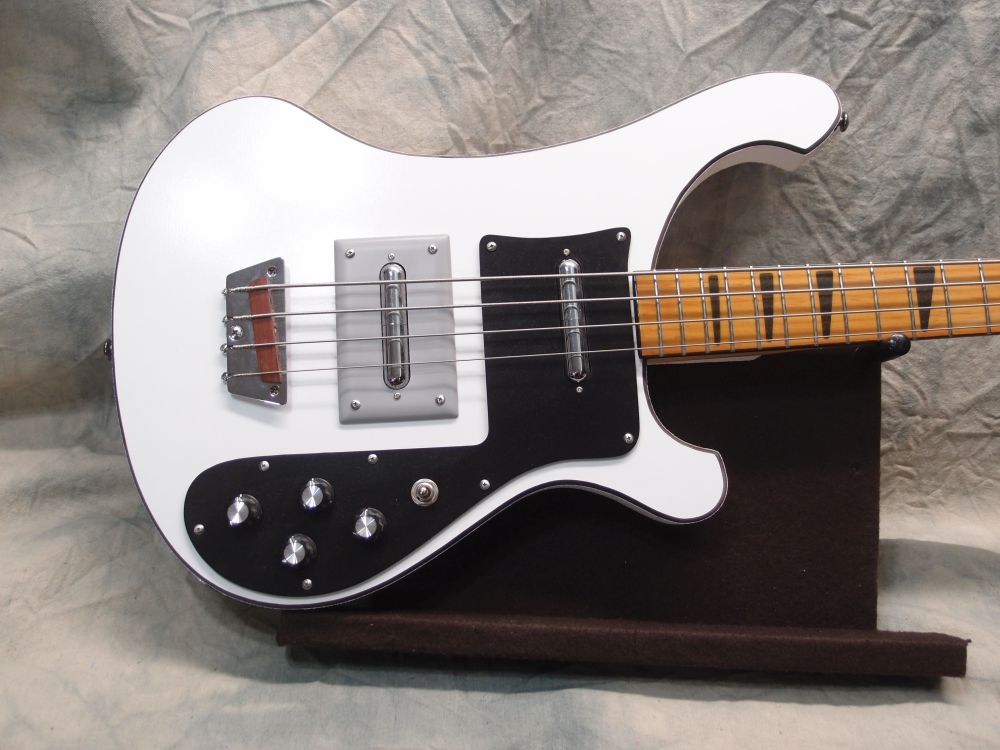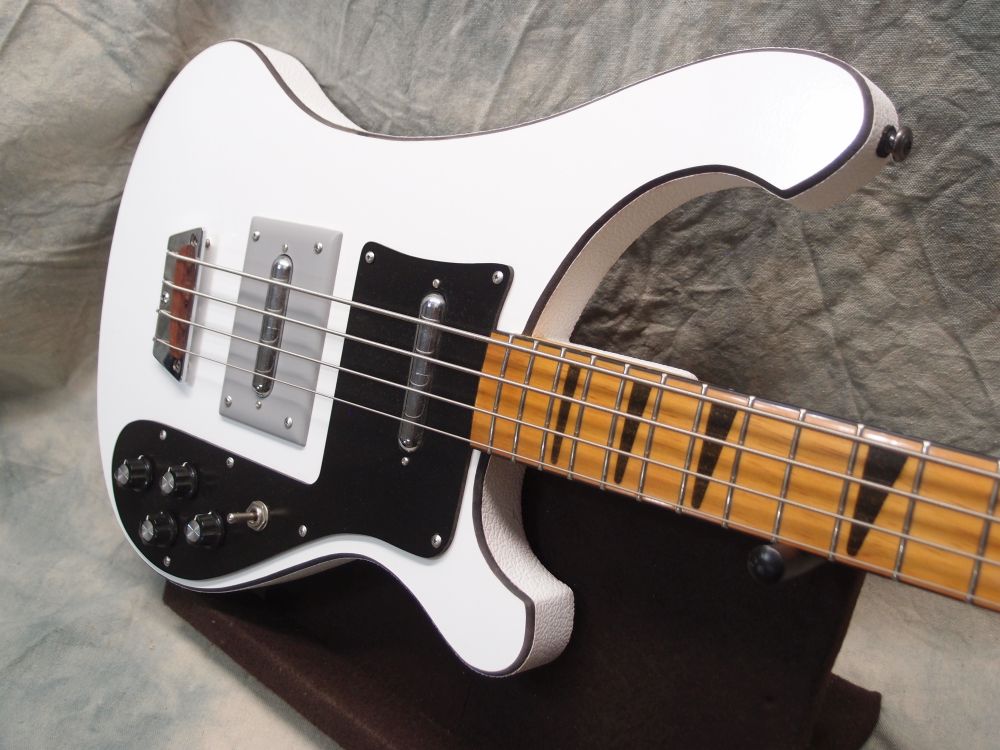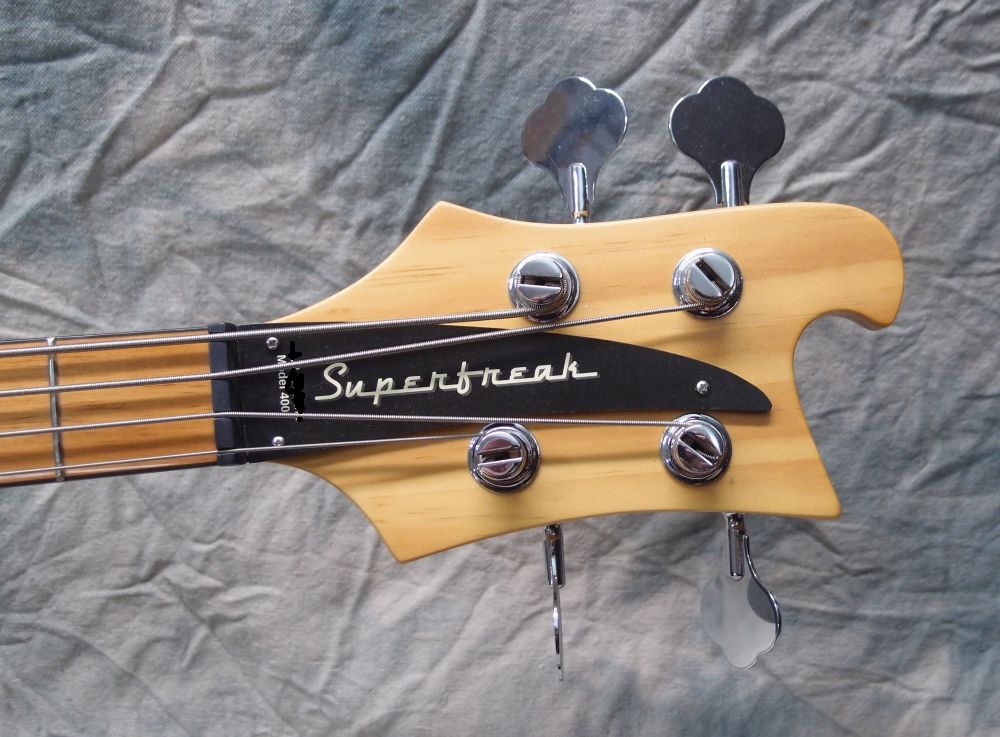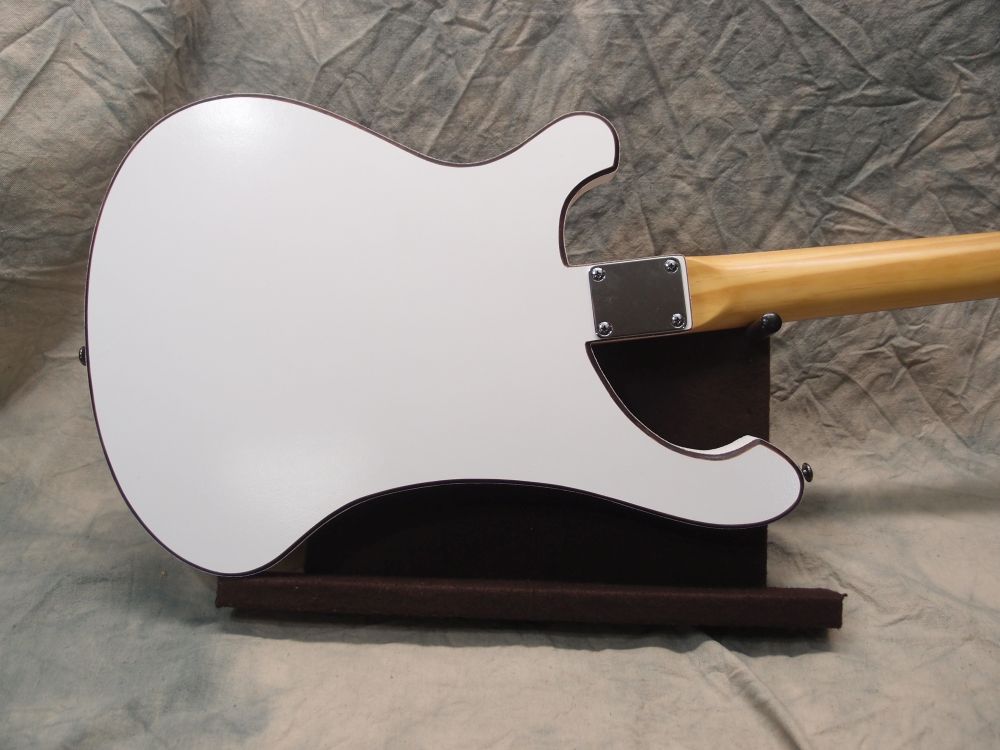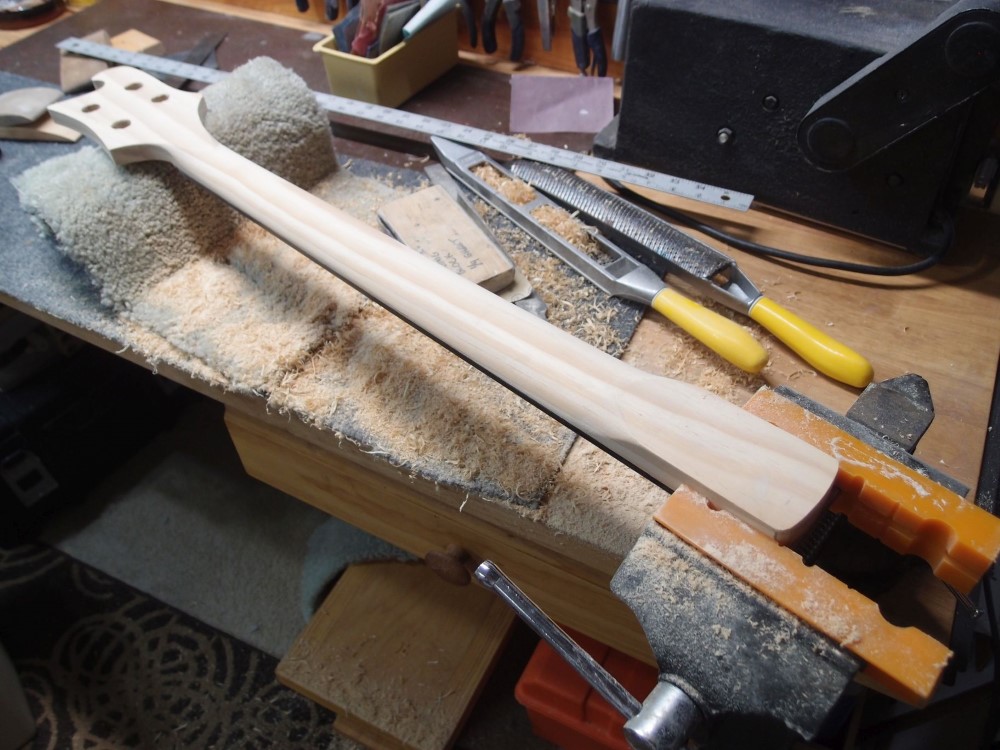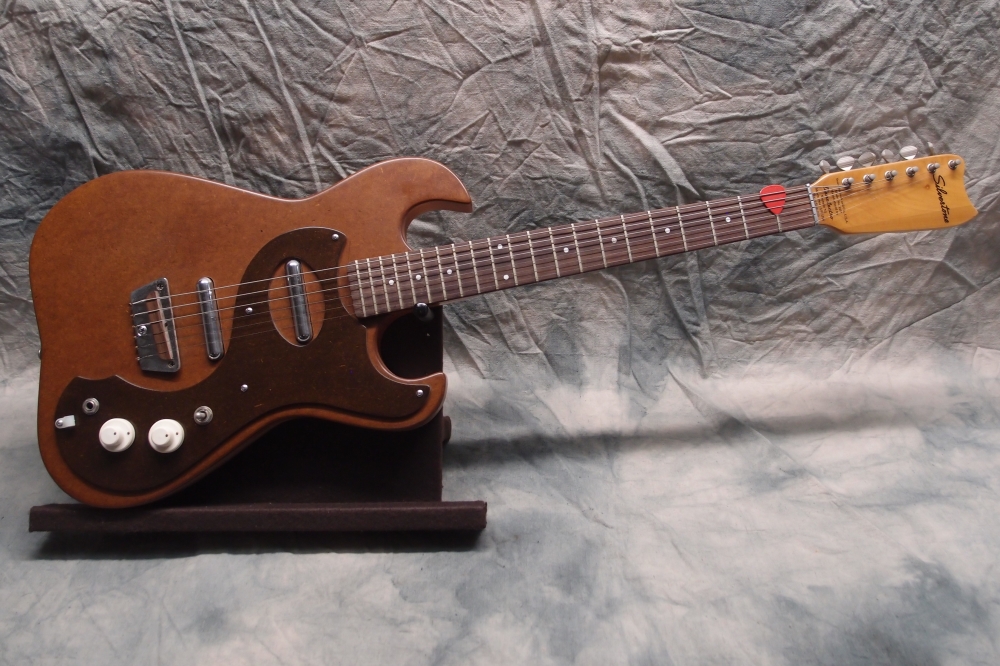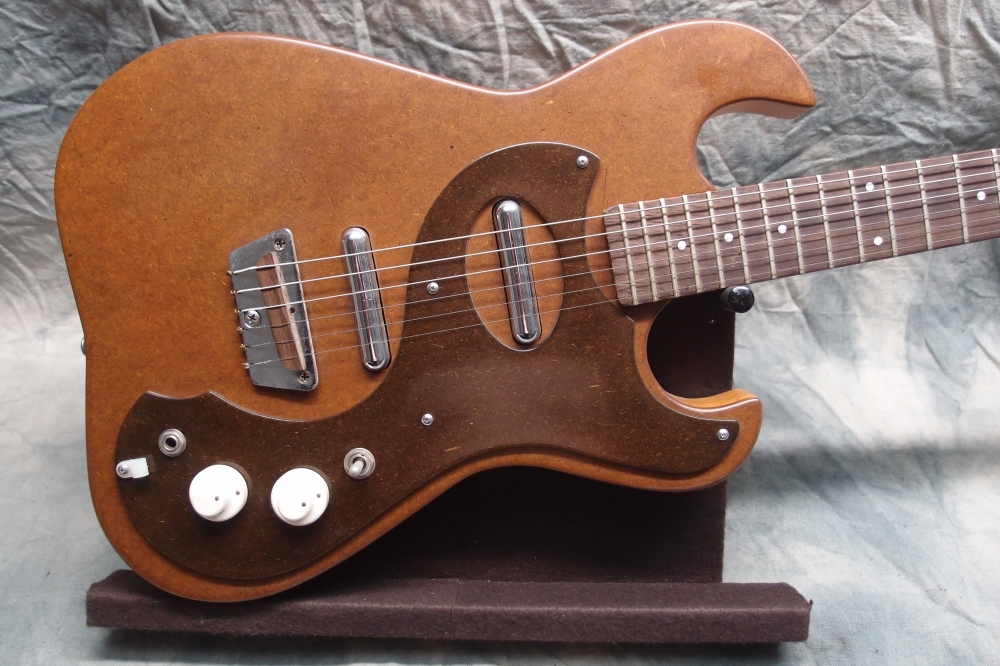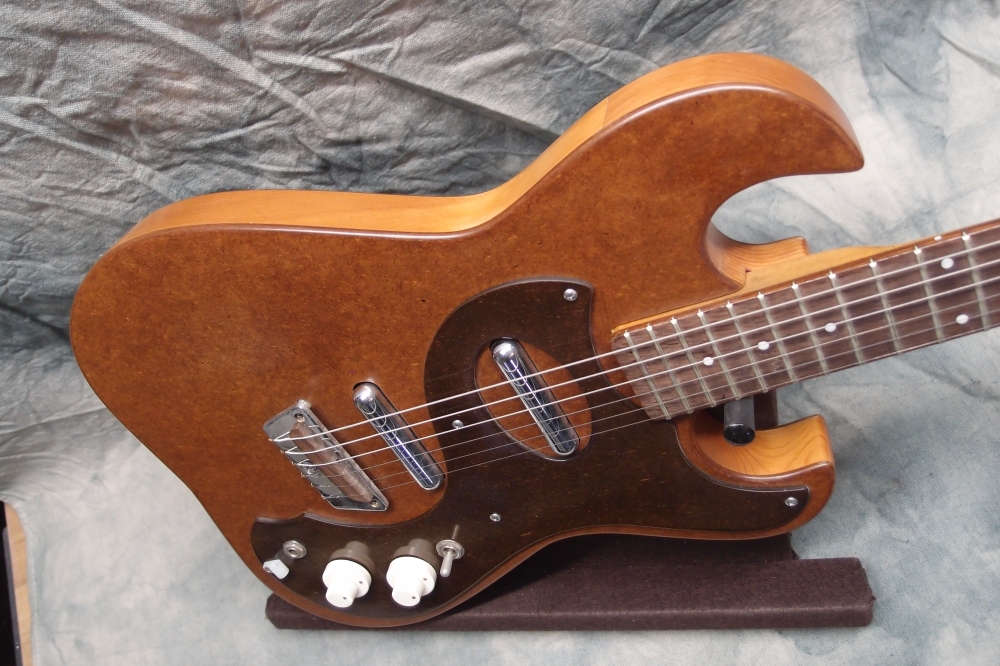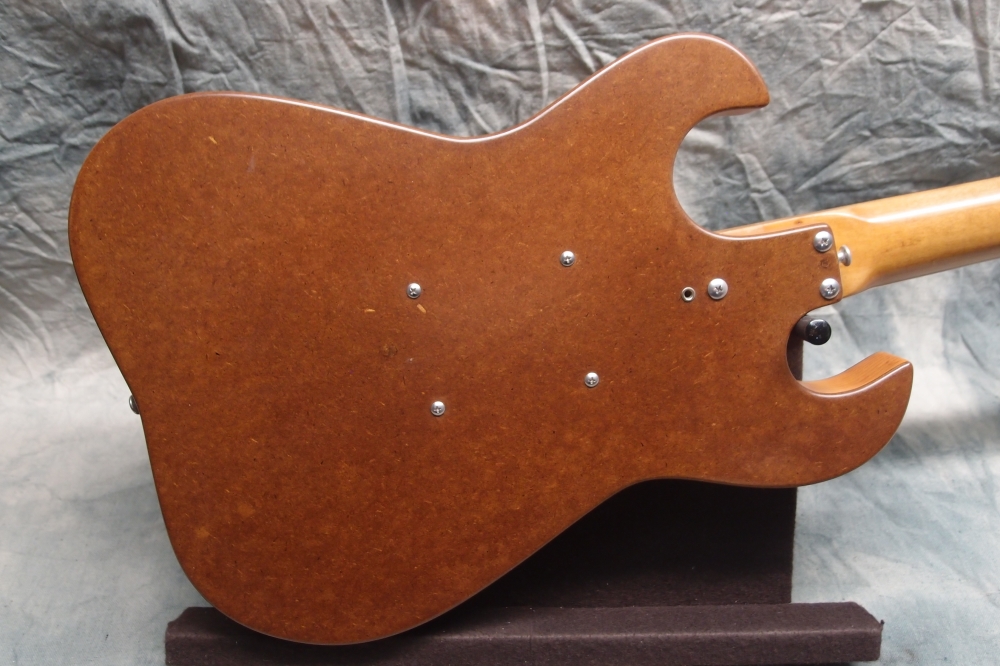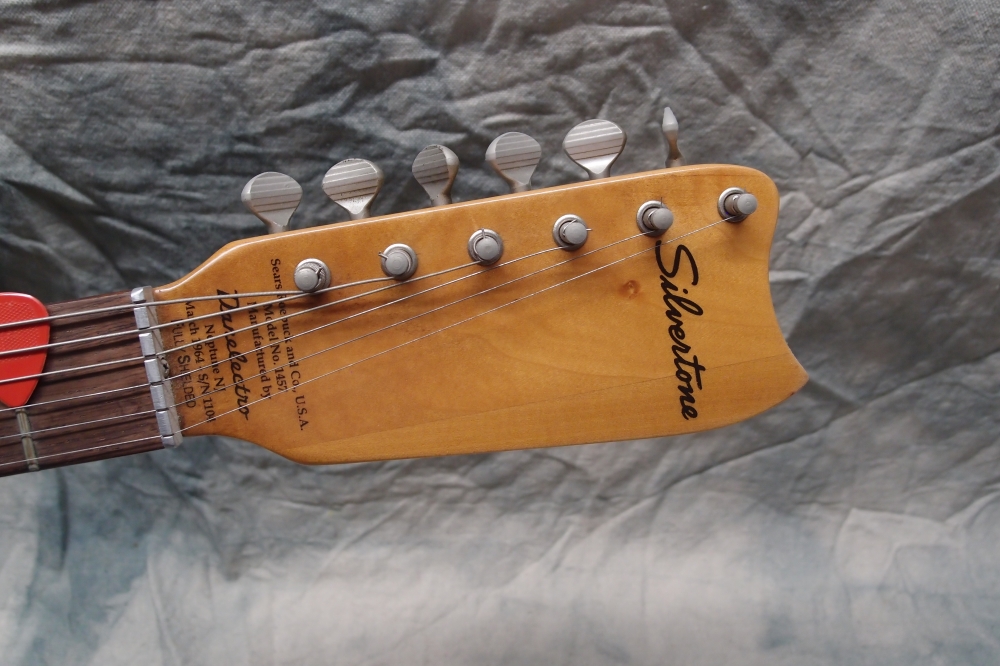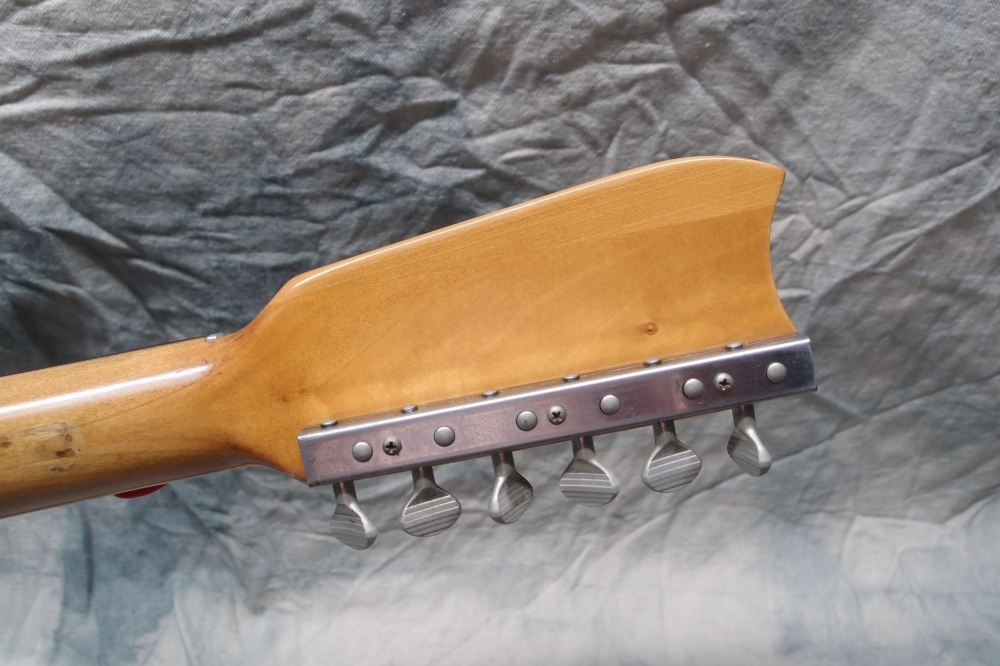July 8, 2020
Superfreaky Part IIa
July 8, 2020
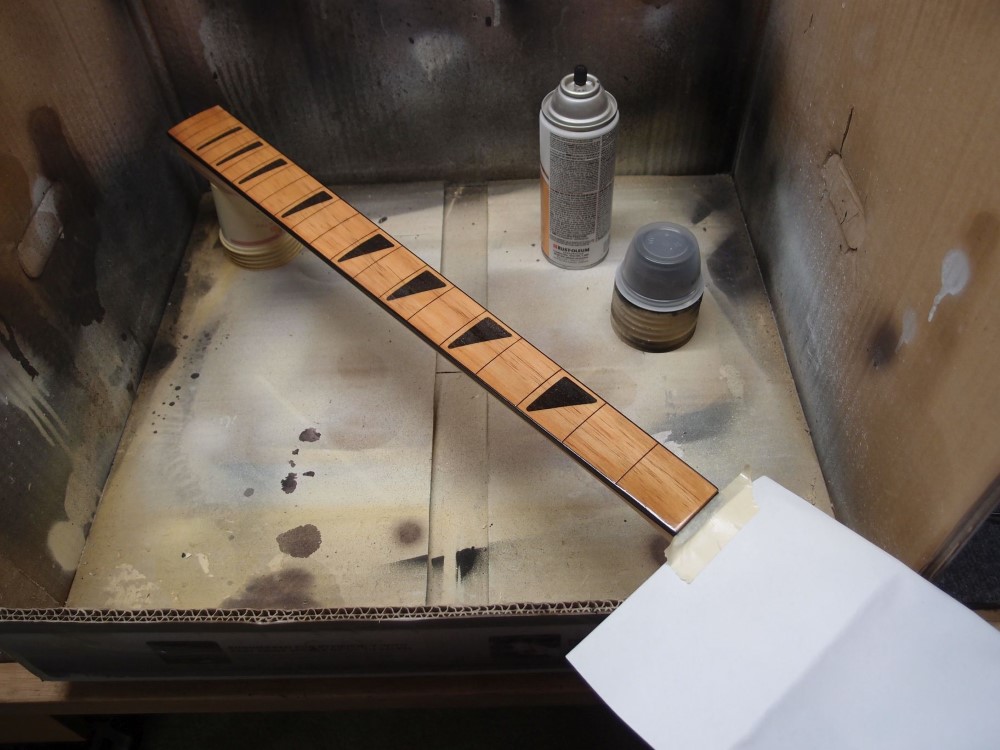
I finished the shaping with a big metal file and 80-grit. Then finish-sanded 100-150 and cleaned out the fret slots. 150 is good enough for now. For final finishing, I'll take it up to 320, which is smooth but leaves plenty of 'tooth' for the finish to grab onto. I wouldn't go any higher - the surface becomes too smooth.
Finally I put several coats of poly wet-on-wet on the fretboard, to build up a single thick layer of plastic. That will give a nice thick protective covering over the stained surface. That will need a few days to harden-off, then I can smooth it down, install the frets, and give it a thin top-coat, and also finish the rest.





